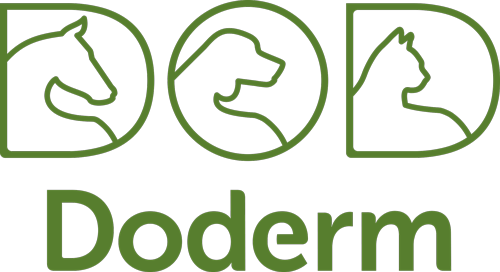Many dogs have to deal with it at some point: a hotspot. It is a painful spot that is very annoying for your dog. A hot spot is a skin inflammation that occurs due to excessive scratching and licking. Itching is often the cause. This itching causes your dog to scratch and lick a lot. A hotspot can develop quickly and give the impression that it is there "suddenly". We will tell you how hotspots develop and how to treat them in this blog!
Many dogs have to deal with it at some point: a hotspot. It is a painful spot that is very annoying for your dog. A hot spot is a skin inflammation that occurs due to excessive scratching and licking. Itching is often the cause. This itching causes your dog to scratch and lick a lot. A hotspot can develop quickly and give the impression that it is there "suddenly". We will tell you how hotspots develop and how to treat them in this blog!
Cause of a hotspot
Hotspots are caused by the excessive spread of bacteria that irritate the skin. Constant scratching and licking of the area is the perfect breeding ground for bacteria - moisture and heat are the preferred conditions for bacteria. Dogs that are sensitive to hotspots often already have a disturbed microbiome. When the skin becomes bare and "rough", it is more susceptible to bacteria that can cause inflammation. It can even bleed and pus come out. This makes it all the more important to find out why your dog is itching and therefore starts to lick and scratch. However, itching is a symptom and can have many different causes. In our blog: "Help, my dog is itching!" you can read all about the causes of itching in your dog.
Treating a Hot Spot
If your dog has a hotspot, it is important that you prevent him from licking and scratching it. This will only make the hotspot worse. To prevent your dog from reaching it for a while, you can buy various collars from pet stores or your vet. In addition, it is important that the location of the hotspot remains dry, as moisture is needed to create a comfortable environment for bacteria. It is also important that the area remains both clean and dry, so playing in the mud and swimming is not advisable. You can also trim or shave the fur in the area a little to prevent dirt from remaining in the fur around it.
If the area is dirty, you can rinse it with lukewarm water and then support the skin with Doderm Hydro Repair Gel. What makes our skin gel unique is that it contains filtered antibodies from the colostrum (colostrum) of cows, which naturally supports skin irritation during recovery.Wil want to know? Learn more about how Doderm Hydro RepairGel can relieve your dog's itching? Then read our page about how Doderm Hydro RepairGel works exactly . If you have any questions, please contact us . We are happy to advise you!
All treatment steps at a glance:
- Avoid further licking and scratching;
- Keep the hotspot dry and clean;
- Support the skin with Doderm Hydro RepairGel;
- Call your veterinarian immediately if your dog shows signs of illness such as lethargy, not eating/drinking, elevated temperature.
The difference to Doderm Hydro RepairGel
We received a very nice review from Mariska. Her dog Beike had a hotspot that she rubbed with Doderm Hydro Repair Gel. Read Mariska's full review below, see the before and after photos and judge for yourself!
For:

After 7 days:

"Beike is an 11-year-old Frisian Stabyhoun. She has a thick coat, which means she suffers from hotspots, especially when there is prolonged humidity. We have now used honey ointment for the first time, but it didn't work very well on her long hair. We then shaved the area and then used Doderm daily for a week. She licks it. New hair is also starting to grow again!"
Is a hotspot contagious?
The hotspot itself is not contagious. Whether it is contagious or not depends mainly on the cause of the hotspot. Is your dog licking and scratching excessively because he is plagued by fleas or mites? These parasites can easily be transmitted to other dogs, which can also cause them to experience discomfort and then a hotspot can develop. Therefore, check your dog regularly for fleas and mites and treat him in time if necessary.
If treated properly, a hot spot will disappear completely after about two weeks. If a hot spot is not treated properly, the skin inflammation can worsen and your dog may even become seriously ill. So intervene in time to prevent things from getting worse. Always ask your veterinarian for the right treatment.


